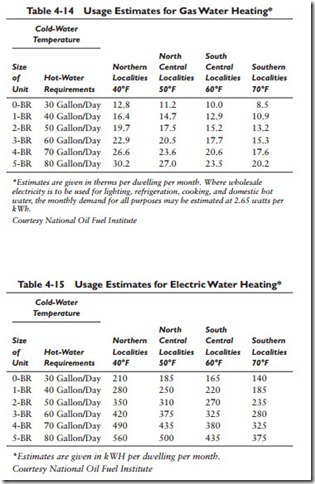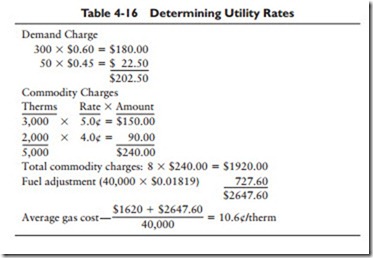Determining Utility Rates
No estimation of heating costs is complete until the utility rates for the various fuels available are determined and included in the estimate. Utility rates depend on so many variables that we can
calculate only an estimated cost, not a precise figure. The problem is to arrive at as accurate an estimation as possible.
Among the many variables involved in determining utility rates are the following:
1. Differing rate structures
2. Fuel/energy adjustment factors
3. Variations in energy block sizes and prices
4. Rate structure qualification procedures
5. Community utility taxes
6. Maximum demand charges
Differing rate structures exist for different facilities or usage. The problem is to determine which rate structure applies to the particular situation. This information can usually be obtained by contacting the local utility and consulting with the utility rate correspondent.
Although this is a simplified explanation, a typical utility bill is computed by adding the demand charge, the energy or commodity charge, and the fuel adjustment charge, and dividing by the total amount of electricity or gas used during the billing period. This produces the average electric or gas cost. The procedure is illustrated in Table 4-16.

